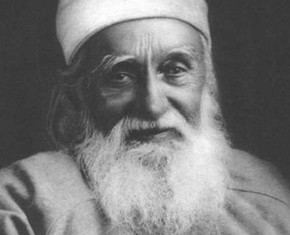The views expressed in our content reflect individual perspectives and do not represent the authoritative views of the Baha'i Faith.
The genesis of the Baha’i Faith began with the independent prophet The Bab – which means “the Gate” – who announced to all humanity that he had come to herald the arrival of a universal messenger:
God hath, at all times and under all conditions, been wholly independent of His creatures. He hath cherished and will ever cherish the desire that all men may attain His gardens of Paradise with utmost love, that no one should sadden another, not even for a moment, and that all should dwell within His cradle of protection and security until the Day of Resurrection which marketh the dayspring of the Revelation of Him Whom God will make manifest.
That new revelation, from 1844 to 1850, generated an enormous flood of tens of thousands of ardent followers in Persia, threatening the political and religious leaders who feared the loss of their power. Soon, vicious persecution followed. The Bab’s followers, called Babis, were tortured, imprisoned, and executed, just as the early Christians were. In 1850, the Bab himself was executed by government order, even though he had committed no crime.
RELATED: How – and Why – New Religions Appear
The transition between the Babi Faith and the Baha’i Faith began to occur soon after the Bab’s execution – but it happened gradually, over the course of almost two decades.
Baha’u’llah had been the center of the Babi community for many years. As time went on, his followers began calling themselves Baha’is (followers of Baha) rather than Babis. As they saw their Faith progressing to a new phase, most of the Babis of Persia became Baha’is through the influence of outstanding teachers who traveled throughout Persia sharing the writings and teachings of Baha’u’llah. These writings sustained the Baha’is to such a degree that those early believers could and did withstand great persecutions. Tortured and killed for their beliefs, thousands faced their brutal and unjust executions with a steadfastness that astonished their oppressors.
Baha’u’llah’s effect on his followers recalled the devotion the disciples showed toward Jesus or the earliest believers evinced toward Muhammad. Not only did the early Baha’is bear the oppression they faced, but they also accomplished the much more difficult work of changing their own hearts and minds.
A Baha’i named Haydar-‘Ali related a story of his own spiritual education received from Baha’u’llah. One day this believer purchased some tea for use in the house of Baha’u’llah. In middle-Eastern culture, the serving of tea to guests has always been an important part of social life. But apparently the tea that Haydar-‘Ali had purchased in Constantinople and sent to Adrianople tasted very bitter. A member of the household in charge of provisions wrote to Haydar-‘Ali and in a very kind manner encouraged him to purchase better quality tea in the future.
Haydar-‘Ali’s pride, wounded by this unsolicited advice, caused him to write an insulting reply. Immediately after this, Haydar-‘Ali received a letter from Baha’u’llah, full of encouragement and praise for his service. The letter assured him that Baha’u’llah had accepted all of his many services, expressing full approval and pleasure.
RELATED: The Baha’i Faith Grows, and the Persecution Intensifies
When he read Baha’u’llah’s letter, Haydar-‘Ali felt deep remorse for his rudeness and arrogance. Haydar-‘Ali later wrote:
I understood the way in which God works in this Most Great, this Most Ancient Revelation … and it is this, that in order to educate the sinners, edify the souls of the evil-doers, and teach them human virtues and the way of servitude Baha’u’llah chastises them with the scourge of loving-kindness and compassion, of tender mercy and grace. To them He manifests His attributes of the All-Merciful, the Concealer of the faults of men.
This attribute of Baha’u’llah’s, and many others, increasingly attracted larger and larger numbers of Baha’is from Persia, who came to Adrianople to see Baha’u’llah. The Persian authorities soon noticed, and it caused them concern, since the rapid growth of the Baha’i Faith had not stopped after Baha’u’llah’s exile, as they had hoped it would. The fact that the Governor of Baghdad and other high-ranking Ottoman officials showed such admiration for Baha’u’llah and Abdu’l-Baha made their concerns grow even deeper.
In an Islamic cultural context, religion and politics inevitably intertwine. The faith community of the prophet Muhammad, over the course of time, had become rulers over a great Islamic civilization. Those rulers feared this new Faith, and saw it as a threat to the established political order, even though Baha’u’llah clearly stated in his writings that he laid no claim to any territory other than the human heart:
O son of dust! All that is in heaven and earth I have ordained for thee, except the human heart, which I have made the habitation of My beauty and glory …
Soon the fears and concerns of the authorities over the rapid spread of the Baha’i teachings would result in another severe chapter in Baha’u’llah’s great exile from the Middle East to the shores of the Mediterranean.
















Comments
Sign in or create an account
Continue with Googleor